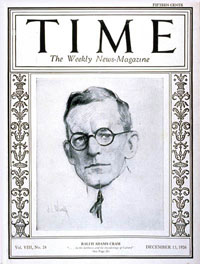 In modern cities, crowds and commerce and cars drown out the ring of mere bells—but this Sunday, if you hear a faint pealing from an Episcopal church, know that it marks the feast-day for three medievalists. Two of them, English-born church architect Richard Upjohn and painter and stained-glass artisan John LaFarge, deserve to be remembered, but pause a bit longer to consider the third and most eccentric, architect Ralph Adams Cram, who clamored to rebuild the medieval world in a greener, more placid America.
In modern cities, crowds and commerce and cars drown out the ring of mere bells—but this Sunday, if you hear a faint pealing from an Episcopal church, know that it marks the feast-day for three medievalists. Two of them, English-born church architect Richard Upjohn and painter and stained-glass artisan John LaFarge, deserve to be remembered, but pause a bit longer to consider the third and most eccentric, architect Ralph Adams Cram, who clamored to rebuild the medieval world in a greener, more placid America.
Born in New Hampshire in 1863, Cram was the son of a Unitarian minister, but seeing the cathedrals of Europe at 23 drew the young man to Catholicism—almost. Enamored of medieval ritual at a time when becoming Roman Catholic would have been gauche, Cram instead embraced Anglo-Catholicism, a form of High Church Anglicanism, as did many Episcopalian intellectuals in the urban Northeast who adored Catholic aesthetics more than they loved the theology.
Cram looked at every skyline and imagined it dwarfed by spires. He was the architect who changed the style of St. John the Divine in New York City from Romanesque to Gothic; he worked for a time on Washington National Cathedral; he designed “collegiate Gothic” halls and other buildings with medievalist touches at Princeton, Wheaton, Richmond, Sweet Briar, and USC; and his firm built scores of churches that stand as neo-Gothic monuments from Pittsburgh to St. Paul. (In 1901, Cram literally wrote the book on church building.)
For Cram, medievalism was more than an aesthetic conceit. After World War I, he saw ruined societies doomed to one of two fates: a slide into a new Dark Age, or a return to ugly, worn-out modernism. Doubling down on his historical predilections, Cram offered, instead, a third way.
“It is in no sense a programme,” he insisted in 1919, with doubtful modesty,
it is still less an effort at establishing an ideal. Let us call it “a way out,” for it is no more than this; not “the” way, nor yet a way to anything approaching a perfect State, still less a perfect condition of life, but rather a possible issue out of a present impasse for some of those who, as I have said, peremptorily reject both of the intolerable alternatives now offered them.
Cram’s proposal? Americans should live, like medieval people, in walled towns.
Much of Walled Towns, Cram’s truly peculiar 1919 book, is a vision of Beaulieu, an imaginary burg situated “about forty miles from one of the largest cities of New England” in a spot that meets Cram’s criteria: arable land, a river, and “some elements of natural beauty.” We can drive to this happy outpost, but the gate house is our last chance to hail the outside world by telephone and telegraph. We’re required to garage our car—but we may, if we wish, pass through the gate on a rented horse. The walls of Beaulieu defend the reveries of an architectural fanatic: a gate that resembles Warwick Castle, a church like St. Cuthbert’s in Wells, a college that blends New College, Oxford with St. John’s, Cambridge, and a town hall inspired by the Hôtel de Ville.
In No Place of Grace: Antimodernism and the Transformation of American Culture, 1880-1920, T.J. Jackson Lears notes that “[s]ince Cram’s death in 1942, historians have dismissed him as an elitist crank, a reactionary in art and politics,” which oversimplifies his life and work. What makes Cram so interesting today is how awkwardly his equal hatred of democracy, socialism, communism, and anarchism meets the political assumptions of the early 21st century.
Cram’s Walled Towns forbid usury, stock markets, production of goods for profit, and all forms of advertising. Walled Towns forbid steam power, but not water mills or, surprisingly, hydroelectricity. A Walled Town is self-sufficient:
That one town or district should be given over to to the weaving of cotton or the spinning of wool; that shoes should chiefly be produced in Lynn, furniture in Grand Rapids, glass in Pittsburgh, beer in Milwaukee, hams in Chicago; that from all over a vast district the raw material of manufacture should be transported for hundreds, perhaps thousands of miles, to various howling wildernesses of highly specialized factories, only to be shipped back again after fabrication to be used or consumed by many of the original producers, was and is one of the preposterous absurdities of an industrial system supported on some of the most appalling sophistry that ever issued out of the Adullamite caves of political economy.
In the Walled Towns all this is changed . . . As each town has its own special products, maintained always at the highest standard, the market never fails.
In a Walled Town, only landholders may vote, and daily life is ruled by guilds—not, Cram stresses, the folk sentimentalized by a wistful William Morris, but a true restoration of the medieval guild system, which Cram calls “the precise antithesis of collectivism, socialism and trades-unionism of whatever form.”
Everyone in a Walled Town shares the same religious convictions; if you’re an Episcopalian knocking at a Catholic gate, seek your coreligionists down the road. Here, knowledge of Latin and a grounding in reading, writing, music, and math are universal, but education, which isn’t apportioned equally, focuses on character. The local college is run by faculty and alumni, not by corrupt or neglectful trustees. Walled Towns have no museums, because old and beautiful objects, such as medieval altarpieces, have been restored to their original uses. Walled Towns have fine art theaters, but no movie houses or sensationalistic shows—because in a Walled Town, “all life is couched in terms of true drama and living beauty.”
Given Cram’s fervent pursuit of applied medievalism, he seems to have overlooked “walled towns” that had recently failed. By World War I, American Arts and Crafts communities had waned; New Clairvaux, a commune of Massachusetts farmers and craftsmen founded in 1902 according to medievalist principles, had flopped; Rose Valley, a Pennsylvania arts-and-crafts project based on the utopianism of William Morris, was suburbanized; and the Americans most likely to retreat into anti-modern self-sufficiency were communists and anarchists, like the founders of my failed hometown commune, Fellowship Farm. Did Cram really believe that a Walled Town could be “at the same time individualist, coöperative and aristocratic”?
Cram does leave himself an out, claiming that his proposal need not be taken literally:
“The phrase ‘Walled Towns’ is symbolical only; it does not imply the great ramparts of masonry with machicolated towers, moats, drawbridges and great city gates such as once guarded the beautiful cities of the Middle Ages. It might, of course; there is no reason why a city should not protect itself from the world without, if its fancy led in this pictorial direction…
For Cram, “pictorial direction” is all. Here’s what he sees in 1919: “ragged and grimy children,” “a surly labourer” who “scowled coarsely, and swore, with his cigar between his teeth”; “men in dirty shirt-sleeves”; “children and goats [that] crawled starvedly around or huddled in the hot shadow”; “the mob of scurrying, pushing men and women, a mob that swelled and scattered constantly in fretful confusion”; “dirt, meanness, ugliness everywhere—in the unhappy people no less than in their surroundings.”
By contrast, Cram’s medieval “way out” abounds with “a great lady on a gaily caparisoned palfrey, with an officious squire in attendance, or perhaps a knight in silver armour, crested wonderfully, his emblazoned shield hanging at his saddle-bow.” There is “the pleasant clamour of voices, the muffled chanting of cloistered nuns in some veiled chapel, the shrill cry of street vendors and children, and the multitudinous bells sounding for worship.” Cram may decry utopians from Plato to H.G. Wells, but his Walled Town is itself the trite utopia of an architectural sketch: happy, faceless people strolling through pristine shopping malls or public squares, doing only what their designer envisions, never misusing, abusing, or defacing their earnest surroundings, freed by architects alone from the ugliness of human nature.
A century after Cram built his mental Beaulieu, no one lives in neo-medieval towns, but Cram still left his mark. Countless Americans first encounter medieval forms in the churches and cathedrals he designed, and his neo-Gothic spires and arches adorn campuses where, in the 1920s, Americans began studying the Middle Ages with greater zeal.
Notice, though, how American medievalism has changed. These days, few academics, ecclesiasts, and architects want to live in the Middle Ages. They tend to look back with detachment, while medievalist nostalgia thrives in genre fiction, video games, and Renaissance Faires. Meanwhile, Cram’s odd brand of aristocratic idealism lives on, split into bits across the ideological spectrum.
When Ralph Adams Cram, fiery nemesis of the impersonal, the imperial, the commercial, the cacophonous, writes that “the only visible hope of recovery lay in a restoration of the unit of human scale, the passion for perfection, and a certain form of philosophy known as sacramentalism,” he makes himself easy to dismiss, even as he drapes precious new lights on humanity’s evergreen dreams. But if, in a slough of disillusionment, you’ve ever pined for agrarian simplicity, religious or political uniformity, stark self-sufficiency, aesthetic transcendence, or lasting peace, then you’ve been, however fleetingly, a pilgrim to one of Cram’s Walled Towns—although it’s been a church, a Ren Fest, a Tea Party, an Occupy rally, or a perfectionist corner inside your own mind where you visit your will on the world.
So on Sunday, if you laugh at the impulse to build a Walled Town, be more charitable than you imagine he was, and let the bells ring for old Ralph Adams Cram. They’re always ringing somewhere.

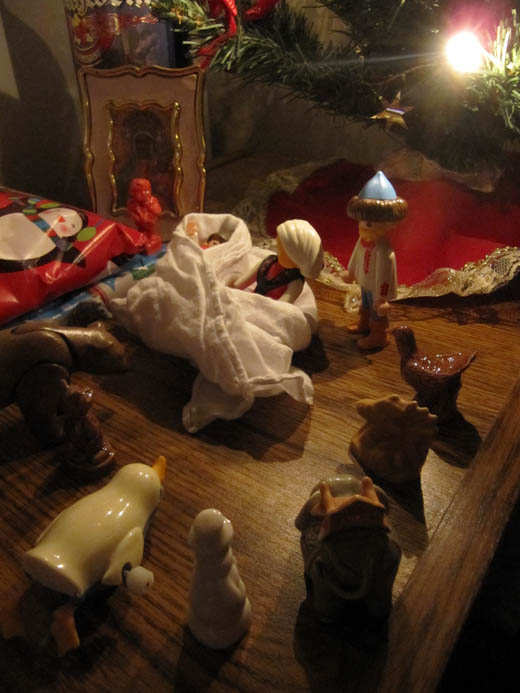
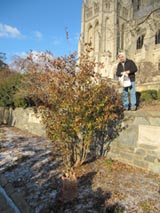 Christmas songs are quick to commemorate the sounds and the sights of the season, but rarely do they dwell on smells. Most people, I gather, fondly recall the fragrance of spruce needles or the cloying whiff of cookies, but this year I’ll pine for a more medieval Christmas scent: the sweet, pseudo-oenomelic aroma of tiny, rotting fruit.
Christmas songs are quick to commemorate the sounds and the sights of the season, but rarely do they dwell on smells. Most people, I gather, fondly recall the fragrance of spruce needles or the cloying whiff of cookies, but this year I’ll pine for a more medieval Christmas scent: the sweet, pseudo-oenomelic aroma of tiny, rotting fruit.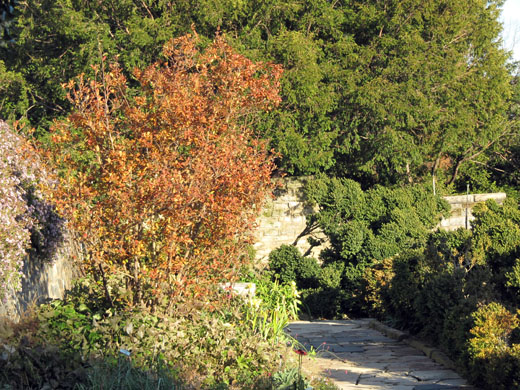
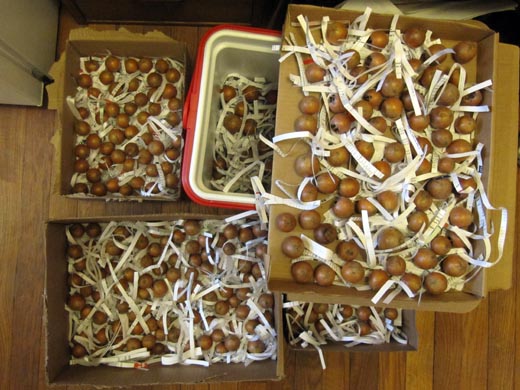



 “I’ve always hated dragon stories, hated the entire elf-dragon-unicorn axis. The very notion of high fantasy causes my saliva to get thick and ropy. But as an exercise, I was attempting to create a dragon whom I could respect in the morning.”
“I’ve always hated dragon stories, hated the entire elf-dragon-unicorn axis. The very notion of high fantasy causes my saliva to get thick and ropy. But as an exercise, I was attempting to create a dragon whom I could respect in the morning.”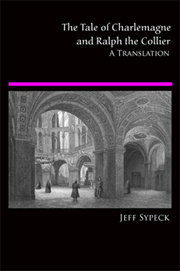 In 2007, I translated the 15th-century romance “The Taill of Rauf Coilyear,” a 972-line Middle Scots poem about the kerfuffle that ensues when Charlemagne, separated from his entourage by a snowstorm at Christmastime, seeks refuge in the home of a proud and irascible collier (a sort of medieval
In 2007, I translated the 15th-century romance “The Taill of Rauf Coilyear,” a 972-line Middle Scots poem about the kerfuffle that ensues when Charlemagne, separated from his entourage by a snowstorm at Christmastime, seeks refuge in the home of a proud and irascible collier (a sort of medieval  In modern cities, crowds and commerce and cars drown out the ring of mere bells—but this Sunday, if you hear a faint pealing from an Episcopal church, know that it marks
In modern cities, crowds and commerce and cars drown out the ring of mere bells—but this Sunday, if you hear a faint pealing from an Episcopal church, know that it marks 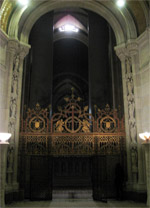 In the murk of winter,
In the murk of winter,  That gentle, elegant sculptures proceeded from Borglum’s hands speaks well only of his talent; art and virtue are often estranged. Still, the sculptor showed surprising grace a few days later when he explained
That gentle, elegant sculptures proceeded from Borglum’s hands speaks well only of his talent; art and virtue are often estranged. Still, the sculptor showed surprising grace a few days later when he explained 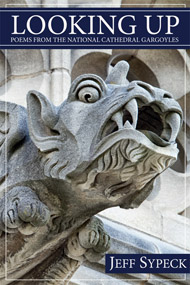 Just seven weeks into the life of Looking Up, nearly 100 copies are already in circulation—a surprising and gratifying start for a small, strange book of formal poems about gargoyles with almost no press and a publicity budget of zilch. To everyone who bought a copy or who sent readers here via blog posts, Facebook, or Twitter: thank you!
Just seven weeks into the life of Looking Up, nearly 100 copies are already in circulation—a surprising and gratifying start for a small, strange book of formal poems about gargoyles with almost no press and a publicity budget of zilch. To everyone who bought a copy or who sent readers here via blog posts, Facebook, or Twitter: thank you!